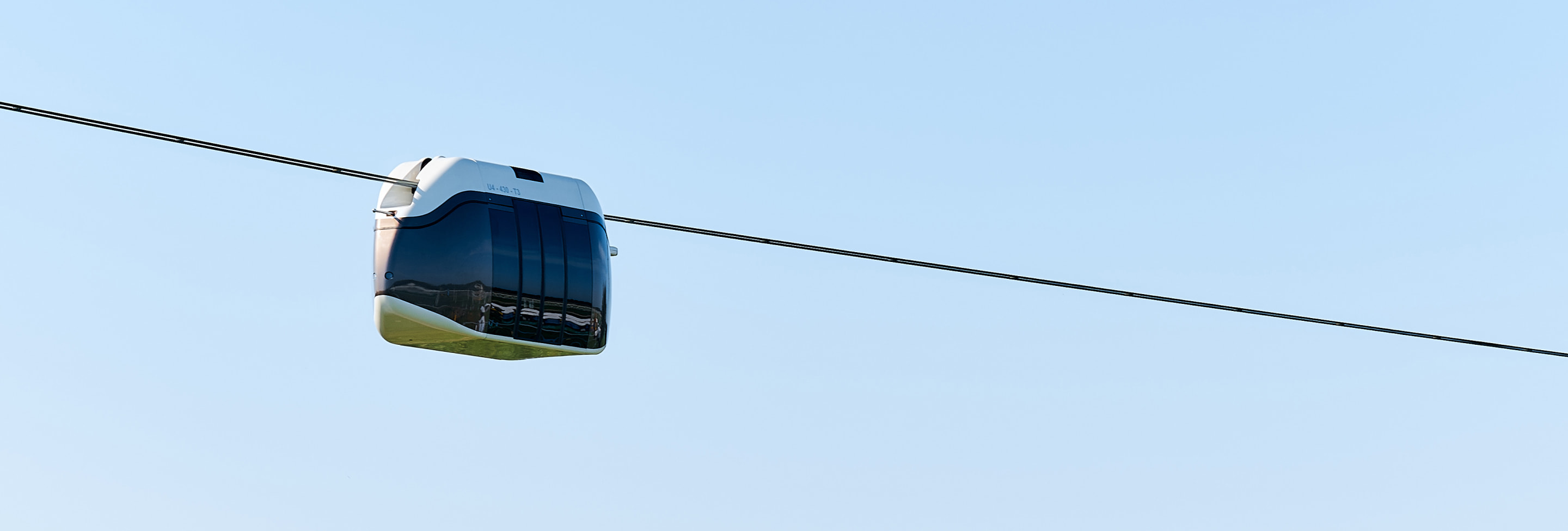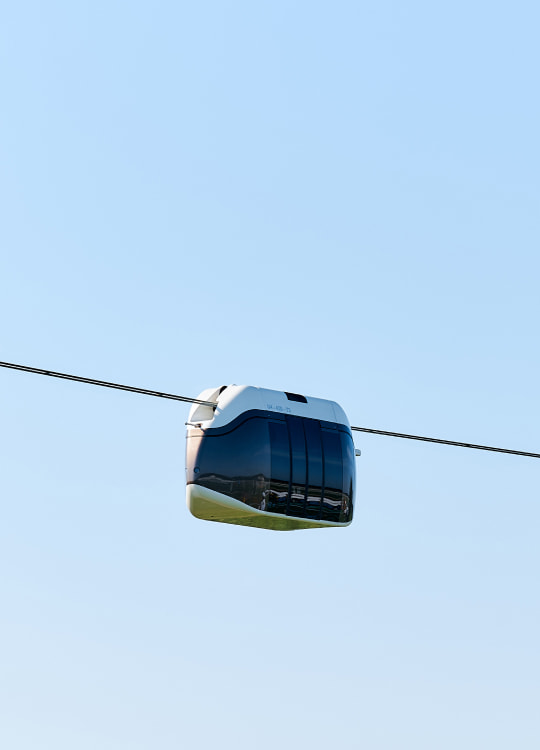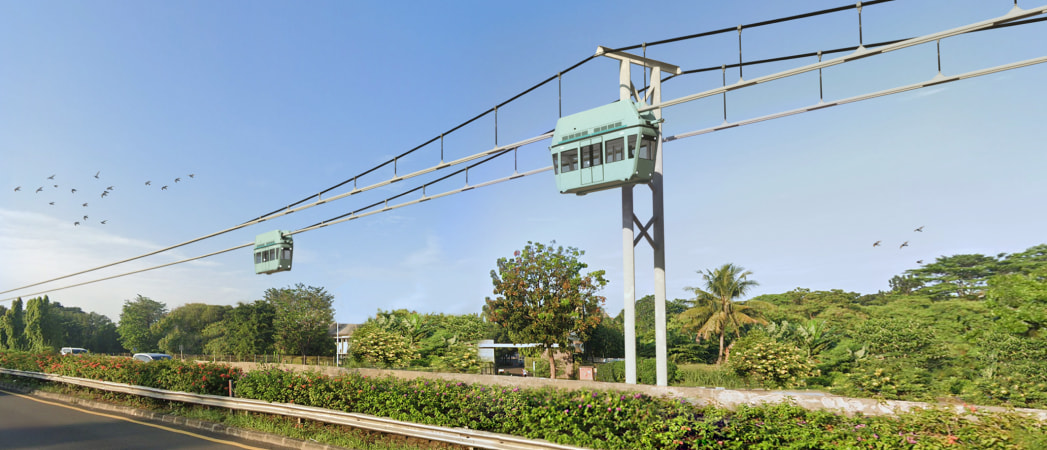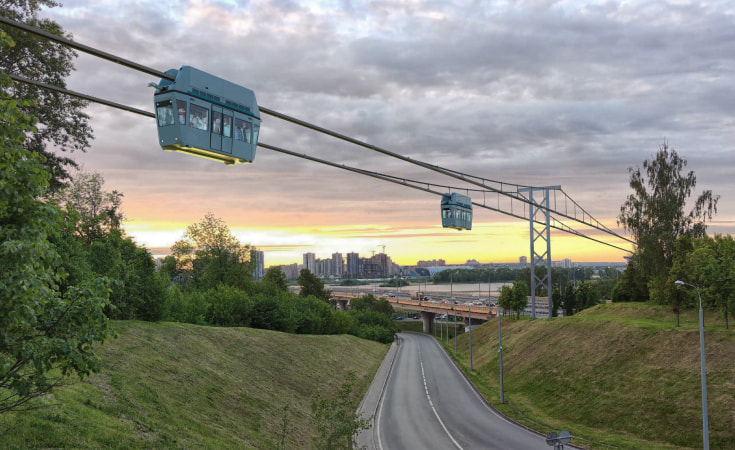String rail overpass


uST Transport & Infrastructure Solutions are based on the new-generation pre-stressed transport overpass technology, with the string rail as its key component
It is an ordinary steel, uncut (lengthwise) reinforced concrete or steel-iron-concrete beam with tensile strings (a bundle of pre-stressed wires) located in its core. The operating surface of the rail is equipped with a special head, which carries passenger and cargo steel-wheeled electric cars (uPods) that travel in automatic mode at speeds of up to 150 km/h (up to 500 km/h in the future).
The string rail overpass consists of anchoring structures, supporting towers, a system of electrical insulators to isolate rails from each other, from supports and support assemblies, as well as from the frame and body of uPods.
Anchoring structures are equipped with anchoring nodes – structural components of the track structure in which the tension of string rails is fixed that transmit the tension force to the anchoring structures.
Fastening of the track structure to supporting towers and load transfer thereto act as support assemblies which represent a combination of components of the track structure (stinger wire, saddles, etc.).
All support assemblies are both load-bearing components (they transmit pre-stressing forces and the weight of rolling stock) and electrical insulators designed for the voltage of up to 1000 V.
The track structure consists of stressed and unstressed sections. The stressed sections of the track structure (both mechanical and electrical stress) are located between anchoring structures; the unstressed sections are located at turns (turnarounds) that are arranged behind the anchoring structures. The stressed sections make up an electrified track structure while the unstressed ones represent a non-electrified track structure on which uPods are propelled from onboard storage devices (storage batteries)


Operating principle
The vertical load is distributed on supporting towers installed at intervals of up to 2,000 meters. The track structure looks light and elegant: it does not obscure the sky and allows you to keep watching natural landscapes on the route.
uST Transport & Infrastructure Solutions based on patented technologies of string rail and string rail transport overpasses require minimum land allotment for construction. They can be adapted for any logistics purposes in urban and intercity transportation of passengers and cargoes
The horizontal load is borne by the anchoring structures that are installed up to 10 kilometers apart. They can be combined with different-purpose buildings, including passenger stations and cargo terminals


Advantages of string rail overpass
The most significant advantages of uST string rail overpass are high strength and evenness of the track, ease of manufacture, low material consumption, capability of operation at extreme temperatures, and minimum energy consumption during the travel of steel-wheeled electric cars
Also, small cross dimensions of the string rail and its high elevation above the ground optimizes aerodynamics (by eliminating parasitic ground effect), increases movement speed and ensures a high level of safety of the transport complex


Types of string rail track structure
- Rigid
- Semi-rigid
- Flexible
- Semi-flexible
Rigid – maximum payload (up to 100 t), high-speed modes (up to 500 km/h), small spans (up to 100 m)


Semi-rigid – enhanced payload (up to 30 t), fast-speed modes (up to 350 km/h) and small spans (up to 50 m)


Flexible – standard payload (up to 20 t), low-speed modes (up to 150 km/h) and large spans (up to 2 km, and up to 5 km when using composite strings)


Semi-flexible (a combination of semi-rigid and flexible ones) – enhanced payload (up to 30 t), high-speed modes (up to 500 km/h) and large spans (up to 2 km, and up to 5 km when using composite strings)



